
DeBox Institute Author: Fang Kuai I Translator: Jasmine | Date: 1st Dec, 2022
King Arthur
In the legend of King Arthur, the magician Merlin created the opportunity for the knights to retrieve the Holy Grail, but few of them won. Only the knight Galahad was able to hold the Grail successfully through the Grail’s generated mirages and mists, confirming the legend’s prophecies. The Grail has been seeking and waiting for the chosen one, not mortals hunting the Grail.
The social platform, with its massive traffic and extraordinarily high business barriers, has been the traditional Internet industry’s Holy Grail in the Web2 era. This is a fantasy that numerous businesses have been vying for. Even Internet giants like Microsoft, Alibaba, and others often suffer in the social sphere. The battle for the Iron Throne of DeFi has almost been settled at the dawn of the Web3 age, but the real war for the Holy Grail in the social sphere has just begun.
Born in a Harsh Winter: The Iron Throne of DeFi
Ethereum was going through its toughest winter yet at the end of 2018 when the price was dropping under $90. However, a young guy, named Hayden Adams, who had recently lost his job at Siemens and had studied mechanical engineering and trained himself to program, independently launched a smart contract named Uniswap on the Ethereum mainnet while he had fewer than 200 Twitter followers. Nobody could have predicted that just two years later, this protocol with less than 500 lines of code could conduct a trillion dollars’ worth of transactions and even develop into one of the most critical infrastructures in the entire DeFi ecosystem.

The crypto industry once again experienced the harsh winter in 2022, with Ether prices plunging from a peak of \(4,800 to \)800 as 3AC, Celsius, FTX, and other previously-unbeatable institutions abruptly crumbled. Users are sick of the constant barrage of “Russian dolls” in DeFi protocols and the same-old NFT graphics. As a result, both the market cap of all Altcoins and the number of active addresses decreased.
There are still two uncharted territories to be discovered, notably SocialFi and GameFi, even though a two-year bull market was reaching its peak in 2020–2021. This is akin to the cryptocurrency market prior to 2019 when a number of on-chain Dex prototypes were developed, such as the formerly popular EtherDelta. But before Uniswap emerged, these DeFi pioneers perished due to a variety of factors, most notably liquidity which was denounced.
Defi and Defi’s laws lay hid in night.
God said, “Let Uniswap be!” and all was light.
The Uniswap time in SocialFi
A prediction: 2023 will be the year to emerge the SocialFi version of Uniswap.
SocialFi will undoubtedly experience its own Uniswap time and become one of the infrastructures in the entire cryptocurrency in 2023, just as Uniswap emerged as the brightest star of DeFi in 2020.
The explosion of Uniswap in 2020, as well as the deaths of all previous Dex, are not random events. It takes the “perfect time, right location, and right people” for a solution like Uniswap to take off. A sufficient quantity of ERC20 tokens has appeared on Ethereum as a result of the 2017 ICO boom, necessitating on-chain token swaps. Furthermore, the emergence of on-chain lottery programs like FOMO3D in 2019 has guided and educated a significant portion of users to use extension wallets like MetaMask. There were all the essential preconditions in place; all that was needed was a protocol to connect and swap all the values and a hub for on-chain liquidity. At that precise moment, Uniswap appeared.
And SocialFi is actually in the same spot that DeFi was in in 2019.
The crypto community has amassed enough users since DeFi Summer and NFT Summer first appeared in 2020 and 2021, respectively. The arrival of NFT particularly has increased the need for Web3 native, holdings-based social applications.
ERC721 is as important to SocialFi as ERC20 is to DeFi.
NFT possesses innate social and networking properties. The PFPs with the most popular stories up to now, such as BAYC and PUNK, do not make an exception. Graphics merely represent the surface of NFT; its spirit is community and culture. Therefore, a platform that carries out the spirit of NFT is critical, much like ERC20, to enable any token swap.

A crucial definition: What is social liquidity?
Before born of Uniswap, the term “liquidity” was not widely used to describe the efficiency of a pair; instead, centralized exchanges preferred the terms “depth” or “volume.“ Liquidity in DeFi typically refers to the total amount of liquidity in a pair as well as the pair’s balance. A pair is also referred to as a “Pool,” and the more tokens a pool has and the more evenly distributed (almost 1:1) it is, the better the pool’s liquidity. Moreover, because of the Router mechanism (cross-pool token swap), the more pools that have access to the same token, such as ETH or WBTC, the higher the liquidity of this token.
Similar to this, we can define “social liquidity” in this manner. “A “group” is a “pool of social liquidity,” and the people who make up the group make up the liquidity itself. The liquidity improves when more “group members” join the same “group” around one theme.
Take for instance how Discord, Telegram, and WeChat are compared. Discord allows for the grouping of all users into a single server, whereas Telegram requires the creation of multiple language groups and WeChat requires the creation of numerous groups due to its maximum user size. As a result, Discord is superior to Telegram and WeChat in terms of social liquidity (Discord > Telegram > WeChat).
Who will own highest social liquidity?
The topic of “Why not Discord?” must be addressed before discussing which platform will be the Uniswap in SocialFi.
This is a good question, and one that all SocialFi projects should address.
Why not, though, go over DeFi’s past once more?
All ERC20 tokens were “listed on exchanges” prior to Uniswap’s magic code, which consists of less than 500 lines. Later, ICO lost its appeal and was replaced by the exchange’s own “IEO,” or initial exchange offering, which is certainly far from the utopian society predicted by wise men like Satoshi Nakamoto. After all, “permissionless” is one of the key tenets of the cryptocurrency world.
What changes will Uniswap make to that?
Yes, at its core. Uniswap offers an incredibly creative structure where there are no market makers, and no censors, anybody can list any token, and anyone can supply liquidity for any token. Therefore, everyone can act as a source of liquidity; there is no longer any need for exchanges, market makers, or project owners.

Since Defi Summer, exchange dominance in the on-chain world has dramatically waned and is likely to become even more trivial in the future. UniswapLabs employs fewer than 30 people, whereas Coinbase has roughly 6,000. Uniswap exceeded Coinbase in terms of the depth of most pairs, and the number of pairs covered by Uniswap was an even more resounding triumph. This is due to the fact that Uniswap has no application requirements for listing tokens, no dedicated market maker, and allows any user to act as a liquidity provider.
Discord is currently in the NFT or SocialFi roles and functions more like an IEO exchange did in the year 2019 by cooperating with the projects.
2019 won’t witness the growth of DeFi protocols because the IEO exchanges control all the liquidity and, as a result, have the authority to make or break projects. The IEO’s services will only be available to teams of a suitable size and with a designated budget.
Now, so does Discord.
Frankly speaking, Discord is just like a centralized exchange. It’s bulky, bloated, and it takes a lot of human and financial resources for a project to maintain a Discord server, where a large team of mods is needed to set up roles for users, set up all kinds of bots, and boost.
For independent artists and niche projects in the NFT field, running Discord is obviously not a good choice. Discord has now become a place for all kinds of large projects to revel in, but independent and niche NFT projects, even if they have a unique community culture, will never make it here.
As a result, we are seeing more and more independent projects with “No Discord”, from Mfer in the beginning to BeVEE most recently, just as more and more DeFi projects, such as OHM before it, were turning down centralized exchanges.

What’s worse is that Discord offers “poor liquidity,” similar to the exchange. Users cannot start or grow this liquidity; they can only pray for the project owner’s clemency. This liquidity is dependent on a centralized project owner, or to put it frankly, the person who created the Server. In the Discord Server, for instance, the project owner, who also created the Server, has complete control. Even if all users are accepted, the administrator can still quickly remove this social liquidity. For instance, following the harsh winter of June 2022, star projects like Panda also suspended Discord’s activities, forcing thousands of community members to relocate.
As a result, there is a greater demand than ever for a Web3-native social network and for a new Uniswap in the SocialFi sphere.
Reviewing the classical failures in history
The SocialFi has a built-in Matthew effect, similar to DeFi. The leading Dex in the DeFi with the best liquidity and lowest slippage will draw the bulk of users, earn the highest fees, and in turn attract the most volume of liquidity. In this way, a Dex’s monopoly on liquidity, once developed, will be virtually impossible to break.
It also applies to social media products. Once a leading platform is developed, it will have the highest quality, most comprehensive content, and the most number of users. KOLs will also benefit from the greatest traffic, which will further entice KOLs to join and provide high-quality content, developing a positive loop.
However, unlike Uniswap, SocialFi has not yet established itself as a monopoly platform; rather, it is still in its infancy or EtherDelta stage.
It will also be important to consider how to find SocialFi’s Uniswap.
After 2021, the market for SocialFi will be flooded with solutions that resemble EtherDelta, including Atem, BitClout, and others. But it’s unfortunate that these explorations are probably going to go on the same fatal path as EtherDelta.
Three factors can be distilled into the reasons why EtherDelta failed:
Negative imitation of a centralized exchange
Poor liquidity
Unfriendly user interface (UI) design
EtherDelta mimicked centralized exchanges in terms of a user interface, operational flow, and even the listing of tokens because it simply intended to replicate Binance or Kraken on the chain. And this also creates a paradox: although dex and cex operate in precisely the same way, users must pay expensive gas fees for each transaction and put up with poor liquidity, so why would users choose dex?

Users prefer something original to an on-chain replica of Binance. Users don’t want a Nokia with more features; they want an iPhone, which no one could have imagined before Steve Jobs invented it.
Returning to SocialFi now Then Atem, BitClout obviously chose the wrong road, and two main points are shown in the following:
Negative copying of Web2 products
Making SocialFi products with DeFi’s mindset
First, projects like Atem, BitClout, and others are akin to EtherDelta and are all attempts to replicate Binance on the chain. Their intentions were to create a Discord or Twitter clone on the chain, and they attempted to copy Discord’s functionalities as well as Twitter’s website and content, but this is exactly why they finally failed. Because these needs were already met by Twitter and Discord, users didn’t need a social platform that was on the chain but worse to use than the current platform.
Second, a lot of SocialFi applications were unsuccessful because of the too persistent DeFi and Geek mindset. It’s hip to advertise oneself as the infrastructure in the DeFi and then provide a Lego portfolio. For instance, using Curve is practically impossible for novice users because of its poor user interface and experience. But despite this, Curve continues to serve as a bedrock of DeFi, and numerous protocols, like Convex, frax, and even Spell, are based on it.

Atem, farcaster, and Lens are a few emerging projects in the Social area that appear to be influenced by this pattern. There are three ways in which this DeFi mindset is experienced.
Establishing a fundamental protocol layer but giving redundant infrastructure
Overemphasis on the PC version
Terrible user experience and a burdensome interaction
Specifically, farcaster and Lens have similar ambitious targets of becoming the on-chain’s social megastars. The question is if this infrastructure is excessively redundant and risky, even though this is a great place to start. For instance, we don’t truly need hundreds of EVM public chains in the public chain field, nor do we need dozens of Layer 2 or sidechains. As evidenced by AAVE’s struggles with Harmony and FTM, having too many chains will only result in more fragmented liquidity, risky pegged or bundled assets, and poor lending protocols. (In brief, AAVE decided to stop supporting such public chains with declining revenues as FTM because it was left with a significant amount of bad debt following the attack on the Harmony bridge.)
The second point is regarding the overemphasis on the PC version. Yes, DeFi’s enormous success was almost entirely developed on the PC end; after all, using the Dashboard on a mobile application is not a pleasant experience. Due to their own experiences, the majority of Web3 social products are now trying to imitate DeFi’s PC success. The most prevalent ones are BitClout and Atem, whose PC versions replicate Twitter and Discord. This is misleading because there is an essential difference between financial products and social products. Financial products are “high-dimensional and low-frequency,” whereas social products are “high-frequency and low-dimensional,” according to the conventional Internet paradigm. Operational convenience of use and user engagement can be negotiated off in financial products to ensure their security, but these features are always given top priority in social products.This implies that the potential of social products on mobile devices blossoming into mega-apps is significantly higher than on PC devices, and Stepen’s development also hints at this.
The third point refers to the interaction. Even if it just requires a 0.1U transaction, it is necessary for DeFi to request permission at every step and to make the user aware of this purpose and the consequences of the permission. For the majority of users, assets are more significant, but a Like, a comment, a follow, or a message may not be significant enough to call for a user to confirm their identity. Perhaps there should be a discussion over the idea that all social behaviors should be set up on the chain.

X to earn, an engine or a toxin
The design of tokenomics is another unavoidable issue with Web3 social products, and this is significant in GameFi. Most people either often confuse business models with tokenomics or simply describe them as Ponzi schemes.
First, it needs to be made clear that the notions of business model and token economics are distinct from one another. For instance, ENS has a fantastic business model that consists just of selling alphabetic characters with a deadline on the letters sold, making it simple but sustainably profitable. However, the ENS token is badly made, with the token holder having only one way of “voting” and being unable to engage in the enormous profits generated by the ENS protocol. ENS’s business model is much more sustainable than AXS and Stepen’s, despite the fact that they both have extremely sophisticated tokenomics—— dual tokens, and a burn plan to make the tokens more liquid and valuable. But compared to ENS, their business model is much less sustainable. But compared to ENS, their business model is much less sustainable. Their revenue is dependent on the inflow of new players, and once that influx reduces, even the most elaborate token design cannot prevent them from falling into a death spiral. As a result, it must be referred to as a Ponzi scheme.
Therefore, adopting tokens is something that needs to be carefully considered for Web3 social products, especially about X to earn. It is a well-known fact that social products are the toughest to launch from scratch. And X to Earn just seems like the ideal free remedy for cold starts. However, it was probably not a wise choice for a social product in the long run.
The largest complaint against Twitter, Telegraph, and Discord is the abundance of bot accounts, which drown out valuable messages with countless scams. For a successful social product, message redundancy is likely more of a nuisance than message scarcity. But instead of resolving this issue, the X-to-earn method can make it worse.
With the goal of resolving the spam conundrum, DeBank has created”attention tokenomics.” Sending a message to a stranger costs money because, according to DeBank Hi’s system, attention is a resource that must be paid for. In other words, it implies that every message from a stranger you see on DeBank is worth a lot of money; after all, no one will pay real money to send spam, which is an innovative design model akin to the gas fee. But the same issue as with Lens is that Pay to chat also means that this design product is often only acceptable in a very narrow community of Geeks.

Finding the holy grail in SocialFi
If one wishes to be the Holy Grail of DeFi like Uniswap, a fantastic SocialFi project that will go down in history must include the following features:
Sufficient ingenuity and innovation to be a game-changing product in its own area, like Uniswap and the iPhone.
A ceiling that is high enough to attract the widest possible users and provide a simple-entry product for each user
A strong enough buffer to serve as the industry’s whole infrastructure and data source.
A straightforward enough business model that anyone can grasp the project’s revenue source in 10 seconds
Compare these 4 points, and it becomes clear that DeBox is just as revolutionary in socialFi liquidity as Uniswap was in the DeFi. To put it simply, if Uniswap aggregates all token liquidity on the chain using the AMM technique of X*Y=K, DeBox aggregates social liquidity by creating distinct token/NFT groups using contract addresses.

Prior to Uniswap, exchange liquidity was dispersed and highly dependent on market makers. In Telegram and Discord, social liquidity was splintered, and groups for the same project may exist concurrently in several groups or even have fake groups. The establishment of these groups hinges on the project owner, who escapes and practically deems social liquidity to be null.
However, in DeBox, the addition or creation of projects has no impact on social liquidity. By using the contract address, any token holder can join a certain group to gather social liquidity. Groups in Telegram or Discord may be canceled by project owners in rare circumstances. However, DeBox’s social liquidity lasts until the final user of the project leaves since groups in DeBox are created independently of the projects themselves.
Similar to how Uniswap did with DeFi, DeBox is actually in a position where it has no competitors and has the potential to make significant contributions to the Web3 Social sphere.
Second, in terms of the ceiling and buffer, social APPs always have the highest migration costs while also having the strongest user bonding and communication capabilities due to their natural aggregation of social networks. Social products are the highest ceiling and the strongest buffer in Web2, and this probably holds true in Web3. DeBox has a fantastic first-mover advantage in this situation because SocialFi’s position will be invulnerable once it develops into a mature product.
There is probably no reason to doubt the viability of the business model for a social product with high user engagement and traffic. Since there are numerous options——whether advertising or bidding ranking, the project owner merely needs to generate a healthy revenue increase in an appropriate manner without annoying the users. In addition, monetization is simpler with tokens in Web3 than in Web2.

Free speech: A user-driven governance implementation
Most Web2 social products are currently plagued by concerns about expression censorship, and stricter and less transparent censorship rules are hurting both platforms and users. Twitter and Facebook, for instance, spend hundreds of millions of dollars annually to recruit staff to censor expression. However, users’ fears about the platforms themselves have grown as a result of this centralized and transparent censorship, as a team of censors can easily delete an account that they have worked hard to maintain for years. Today’s social media content is not to anyone’s liking. Some people think that these platforms have turned into vessels for offensive speech, scathing criticism, and prejudice. Others, meanwhile, argue that these platforms are systematically stifling or restricting particular viewpoints and have grown overly intrusive in their monitoring of statement.
What is evident is that Web2 failed to offer essential solutions to these challenges. The division between platform ownership and users is the core issue. In “Protocols, Not Platforms: A Technological Approach to Free Speech” MIKE MASNICK argues that users should be able to choose their own tolerance level for various types of statements, allowing the majority of people to more easily avoid the most dangerous statements without completely silencing anyone and even less permitting the platform itself to determine who can make statements.
Simply said, let the users make the decisions and leave the hired censors out of it.
This optimistic outlook has one drawback: most users are unwilling to take part in the platform’s content governance. It is quite difficult to tell who is sincerely willing to put in the unselfish effort to take on the role of censor. This is a classic “tragedy of the commons.” The good news is that we can somewhat overcome this issue now that we have NFT and SBT.
DeBox, a new platform that aims to develop an alternative method of content governance that doesn’t rely on a centralized decision-making body, including:
An algorithm to identify “suspicious accounts”
A governance framework that relies on specific NFT users
Regarding the first point, DeBox creates a straightforward set of identification rules to prevent being overwhelmed by spam on the platform. An account that is banned by three or more groups at once will be temporarily unable to chat on the whole platform until unbanned at least by one of the groups. There is, surely, a one-month maximum time limit on the ban. This implies that bots can only spam up to three groups once at a time, and if they are genuine users, they will typically be aware that the messages may indeed be inappropriate once they are banned from a group.
DeBox has created a governance framework for the content governance of public squares like Moment that depends on specific NFTs. When content that may be controversial comes to the public, holders of the particular NFT take part in the platform’s content governance and make quick initial judgments. An appeal against this decision can be made by a user, and the conclusion will be decided by a vote of all NFT holders. If NFT holders always make poor decisions, their weight in governance will be gradually weakened. Economically, this greatly reduces the casualness of the general user’s engagement in content governance. (If NFT holders irresponsibly censor content and lead to loss of users, their own NFT value would fall as well.)

Conclusion
Let me conclude by repeating the holy grail prophecy in crypto. With a Super Dapp Summer on the horizon, Web3 native social products could be headed for their own Uniswap time. Likewise, Web3 could completely eclipse the traditional world, with DeFi surpassing the total value of stock exchanges and banks. Web3’s native social products won’t take over than a decade to overtake the current industry giants, such as Facebook and Tencent. This prophecy is based on the core conviction that everyone will have greater and more freedom, including the basic rights to expression, transparent, and uncensored transactions, as given to us by the pioneers like Satoshi Nakamoto when they departed.
Anyone who can enter the crypto world now is fortunate because it’s still in its infancy. The genuine Holy Grail hasn’t been lifted yet, so there’s still a ton of room for good projects to achieve 10x, 100x, or even 10,000x growth. Through the chilly winter and the mist, all we have to do is find out and wait. Undoubtedly, the Holy Grail will back to those who made the promises.
The DeBox Institute is a decentralized community backed by the DeBox Foundation and dedicated to Web 3.0 research. Its major aim is to provide research studies that will aid individuals in understanding the foundations and potential of Web 3.0. The reports will be posted on DeBox’s own media platforms or media columns, including mirror, Foresight, Blockbeats, etc. There are currently 6 research departments built under the Institute, including DeFi, NFT, Public Chain, SocialFi, and other various Web3.0 fields.
Please don’t base any investment decisions on this report. The author and DeBox Institute are not liable for the user’s investment returns. The aforementioned market analysis and material are provided for informational purposes only and should not be used as the premise for any investment advice or decision.
Some of the comments in this report contain the author’s predictions for the future and other forward views. Real results, performance, or events might differ from the opinions and assumptions stated in the report due to risk and uncertainties, both known and unknown. Furthermore, neither the writer nor DeBox Institute makes any guarantees to the user about no loss or a minimum return.
As part of the preparation for this report, the writer has included certain text from previous related publications along with links to the quotes. In case of copyright violation, kindly get in touch with the writer so it can be changed or deleted.
Writer’s Twitter: @BitPastor
DeBox official website
















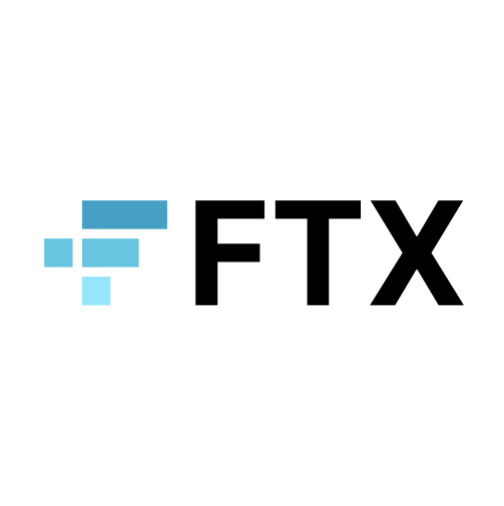







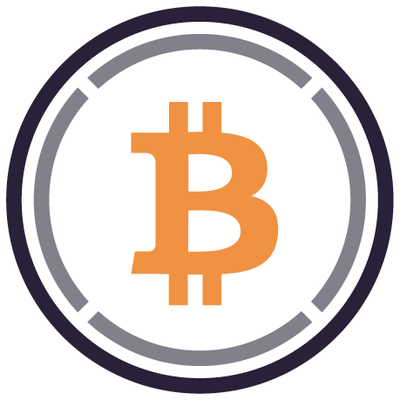













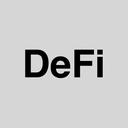










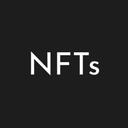









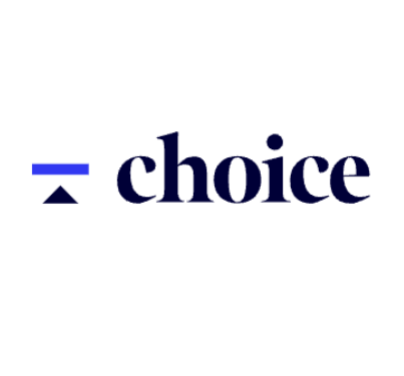


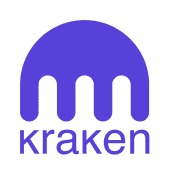

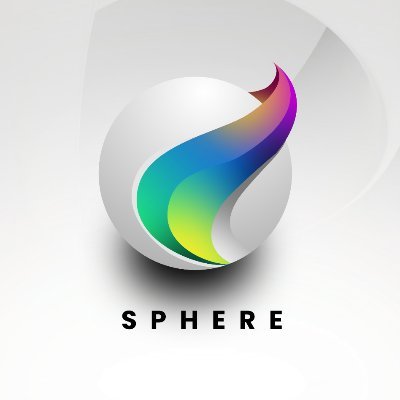









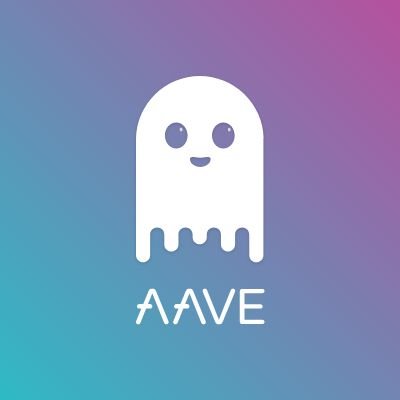
【免责声明】市场有风险,投资需谨慎。本文不构成投资建议,用户应考虑本文中的任何意见、观点或结论是否符合其特定状况。据此投资,责任自负。


